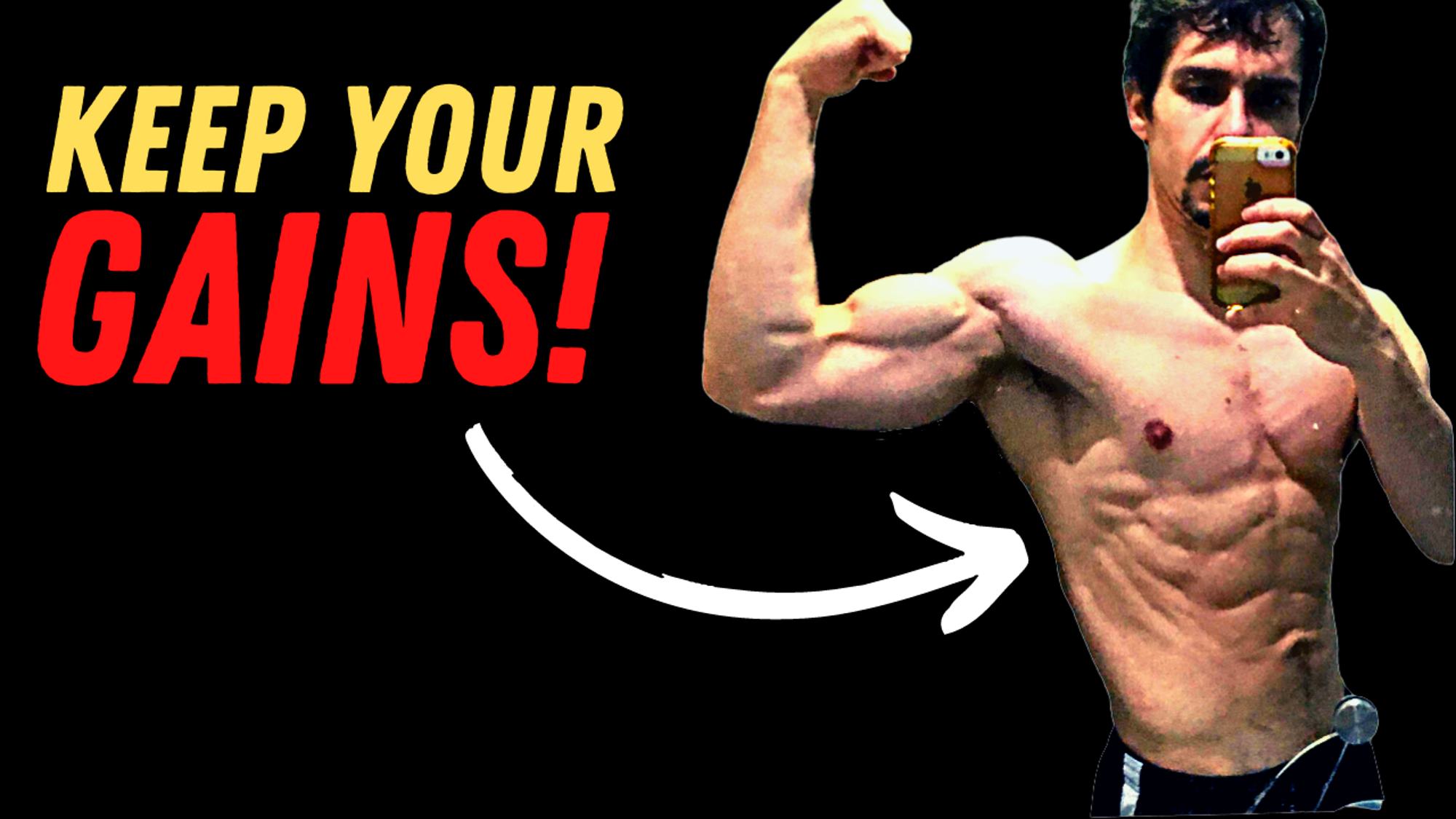
When you’re new to weightlifting you’ll likely pack on muscle quickly – no matter what you do.
Once you’ve finished packing on lean mass, you’ll likely want to get cut.
Unfortunately, many of us end up losing most of the muscle we worked so hard to gain. We spin our wheels in an endless cycle of bulking and cutting.
Here we share the best ways of keeping all your gains as well as potentially adding even more muscle while you cut.
Why Do We Lose Muscle?
When getting lean, our bodies are in a caloric deficit. In most instances, even while lifting weights with workout equipment and eating lots of protein, our bodies will resort to muscle tissue for energy.
Countless scientific case studies exist which look at ways to prevent muscle breakdown, but in all the case studies we examined, all the natural bodybuilders lost lean mass. In one study, around 40% of the weight lost was from lean muscle.
One of the big issues comes down to testosterone: While in a deficit, men’s testosterone levels plummet and this means we get weaker, we lose muscle mass, and we get smaller.
Another issue is that we run into metabolic adaptation – something which is often referred to as the plateau. After a length of time in a caloric deficit, our bodies become better at utilising calories and therefore we need fewer calories to maintain our body weight. That means we must cut calories and do more cardio – both of which are detrimental to our strength and hormone levels.
How Can We Keep Our Gains?
There are several ways to reduce the level of metabolic adaptation as well as keeping up our testosterone levels.
1. Don’t Cut Too Fast
Firstly, don’t try to cut too fast. Studies show that a rate of 0.5 – 1% of your total body weight per week to be ideal.
Even at this rate you should still make excellent progress while limiting the amount of muscle you lose.
2. Don’t Do Too Much Cardio
Exercise puts stress on the body and while cardio does help with fat loss, too much can cause us to lose muscle mass as well. As a rule of thumb, look for about 40% of your caloric deficit to come from cardio and the other 60% from diet.
3. Try 24-Hour Intermittent Fasting
Intermittent fasting has grown in popularity over the past few years. While more research is needed, studies suggest that fasting is better for lean mass preservation than a standard calorie restricted diet.
Fasting for 24 hours also tricks our circadian clock (the internal clock within our cells which tells us when to eat, sleep, poop – all our bodily functions, basically). When fasting for 24 hours and feasting for 24 hours, our body is less likely to metabolically adapt, and we stave off the effects of the plateau.
4. Change Up Your Routine
There is a common myth that you must regularly change up your exercise routine to keep your muscles “guessing.”
While this is widely accepted to be nonsense, there are good reasons to change your routine when cutting down.
If you were previously training for strength, it makes sense to move towards a high-volume routine to burn more calories and prioritise muscle hypertrophy. You’re likely to get weaker when cutting, so it makes sense to turn the focus away from strength improvements.
5. Get the Right Amount of Protein
Notice we don’t say “eat enough protein”. It’s easy to think that going over your protein requirements is better than falling short, however, when you’re dieting and wish to preserve muscle mass, you should not compromise other macros such as carbs and fats.
Carbs are essential for restoring glycogen, and fats are required for hormone regulation – so cutting these out could result in lower testosterone and weaker training sessions. Try using a protein intake calculator to ensure you’re getting the right amount.
Final Words
When training hard to build muscle, the last thing you want to do is lose it when trying to get ripped for the summer or for a bodybuilding comp.
By following these 5 quick and easy rules, you’ll keep all your hard-earned gains while losing almost exclusively fat mass.